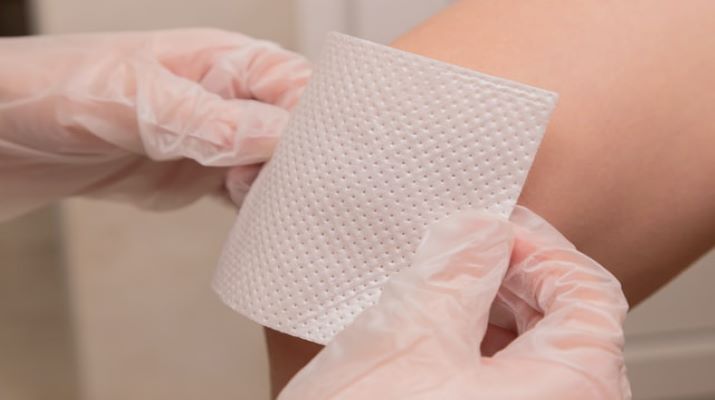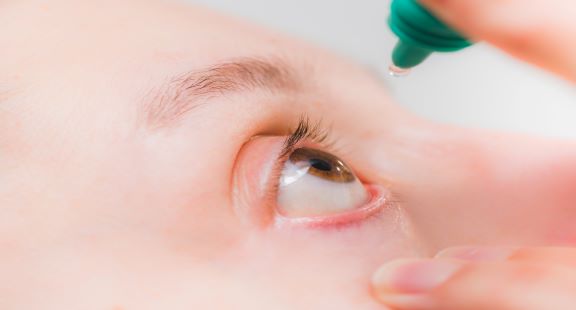
Introduction
CBD transdermal patches are medicinal strips that release cannabinoids through the skin into the bloodstream when attached to specific areas of the skin.
According to the WHO, 70% of deaths in the world are due to non-communicable diseases. That collectively includes cardiovascular disease, cancer, chronic respiratory disease, and diabetes. In addition to various other conditions that branch off from them. That being said, what are the main causes of these chronic disorders?
Human habits such as tobacco use, alcohol abuse, an unhealthy diet, and lack of physical activity are the root causes of these conditions. But diagnosing, treating, curing, or preventing these ailments comes with many challenges. In particular, conventional drug delivery systems, such as oral tablets, capsules, or intravenous administration, do not fully address pain and inflammation. Consequently, they are ineffective and carry adverse side effects.
Therefore, there is a growing need to improve efficacy and optimize bioavailability.
Thanks to the new drug delivery systems developed to deliver the desired cannabinoids through oral, dermal and implantable systems.
For people choosing cannabis-based therapies, or CBD products, CBD patches are another option. The transdermal administration of cannabidiol helps in a controlled and sustained release that allows the CBD to go directly to the tissues.
In summary, this article aims to answer some common questions about CBD patches, their functions, and their effects.
What are CBD patches?
“Transdermal Drug Delivery, (TDDS) a self-contained and discrete dosage form known as patches” defines a 2017 study 1
In appearance, a CBD patch is similar to a band-aid. (probably the size of the palm of your hand) and can be square or circular in shape. These CBD patches are made of thin layers of plastic, infused with CBD, coated with adhesive and reagents that enhance penetration into the skin. This transdermal technology allows definitive doses of the cannabinoid to be delivered directly into the bloodstream through the skin.
A 2008 study 2 found that the design of most transdermal patches is more or less similar.
The drug is kept in a reservoir in which one side is enclosed in a waterproof support and the other adhesive side is in contact with the skin. Depending on the manufacturer, patch designs can vary and have two or up to four layers, including a leak-proof waterproof membrane, a drug reservoir, a semi-permeable membrane, and the adhesive layer. These designs are suitable to hold liquids or gels.
The transdermal patches are durable, as they are resistant to sweat and water. As a result, the administration of CBD is consistent and effective.
CBD patches are available in different strengths and can contain full-spectrum, broad-spectrum, or isolated CBD, depending on the manufacturer.
Types of patches
Reference of two studies, a study from 2007 3 and a study from 2011 4 elaborate the classification of the different patches and their functions.
| Matrix patch | Tank patch or membrane controlled system | Adhesive patch with medication |
| A polymeric matrix retains and controls the release of the drug. | The drug is preserved and released through a liquid reservoir behind a leak-proof speed limiting membrane. | The drug is incorporated directly into the adhesive layer. |
| These patches are used when the drug and the transdermal adhesive are not compatible or soluble. | These patches are able to easily permeate the skin. Example: lidocaine, nitroglycerin, and nicotine. | |
| The active substance is distributed evenly throughout the patch. | Depot patches allow tighter control of supply rates. | |
| Less risk of accidental overdose and offers less potential for abuse than the deposit system. | Risk of sudden drug release into the skin and overdose, as a larger surface area of the skin is exposed for drug absorption. |
How to use a CBD patch?
- Using a CBD patch is as simple as it sounds. But to effectively deliver CBD into the system, choosing a suitable area of your skin is the first step.
- Locate the area of pain and try to apply the patch near the area of pain.
- Avoid bony areas or the part of the elbow that has thicker layers of skin.
- A CBD patch applied to a venous part of the body allows CBD to easily penetrate the skin, as the molecules come into close contact with a large part of the skin. Therefore, this transdermal route of administration ensures the maximum bioavailability of CBD in the bloodstream.
- Below the neck, behind the ear, the front of the foot, behind the ankle, the wrist, the shoulders, between the biceps and triceps, the thigh, the calf muscle, and the lower back are effective points they might feel relief quickly.
- Gently clean the area where you want to apply the patch with an alcohol swab before sticking it on.
- Peel off the outer sheet and apply the patch.
How does a CBD patch work?
In short, as soon as a CBD patch adheres to the skin, a series of chemical reactions take place. The heat from the body releases the CBD molecules and other ingredients contained in the patch. As these molecules are released, the skin begins to absorb them and head into the bloodstream.
Now, let’s try to understand it in detail.
A 2011 study 4 elaborates that a patch is composed of the drug, the release liner, the adhesive, the membranes, the backing layer, and other ingredients.
- The release liner seals the formulation zone to control drug release.
- The backing layer is a protective covering for the medicine it contains. Raises the level of hydration of the outermost layer of the skin, the SC (stratum corneum).
- The adhesive keeps the patch firmly adhered to the skin during use.
The 2007 study 5 explains,
- After the patch is applied, a drug concentration gradient is established and through it the drug begins to move to the skin. (Depends on the type of patch)
- The outermost layer of skin SC establishes a reservoir,
- The drug also travels to the other layers of the skin. And it is absorbed into the network of blood vessels, which transports the drug for its systemic circulation.
Benefits of transdermal administration of CBD patches.
- In general, the transdermal route of administration of CBD products is discreet and easy to use.
- It can be easily self-administered.
- A CBD patch is a need-based supply of cannabinoids. When not necessary, it is easier to remove.
- The 2018 study 6 indicates that absorption in oral routes is slow, erratic and variable. But the transdermal route eliminates first-pass metabolism or intestinal processes.
- Therefore, the patch provides better bioavailability.
- Equally important is the fact that taking CBD transdermally facilitates a constant release of cannabidiol over a longer duration. At the same time, the risk of peak drug concentrations is lowered.
- Topical routes are best suited for localized pain or symptoms. For example, in arthritis, peripheral neuropathic pain or dermatological conditions.
- CBD patches provide positive effects in reducing pain-related conditions, including pain caused by inflammation, localized pain, muscle spasms, multiple sclerosis, chemotherapy, back pain, injury, etc. .
- A 2015 study 7 concludes that the topical application of CBD has therapeutic potential to alleviate the pain-related behaviors of arthritis and inflammation without obvious side effects.
- A 2017 study 1 states that the therapeutic value of many drugs could be improved through this method, as it eliminates all drug-associated problems such as decreased absorption, GI irritation, decomposition due to liver first-pass metabolism.
Disadvantages of transdermal administration
A 2017 study 8 points out the possibility of low permeability of certain substances on the skin.
We are aware that human skin has a low permeability. Because the skin acts as a protective barrier that does not allow easy transdermal absorption of a substance.
A reference to a 1997 study 9 on the skin’s permeability barrier is noteworthy at this point. It states that the resistance of the outermost layer of the epidermis hinders and prevents the transdermal administration of drugs.
But, in contrast to the previous reference, another study affirms the possibility of penetration of the drugs that could vary in different regions of the skin (such as the forearm, shoulder, scalp, back, abdomen, buttocks, etc. .
A 2010 study 10 reports that chemical enhancers increase the permeability of the skin to therapeutic drugs. He also adds that some of the commonly used enhancers in combination with iontophoresis (a process of transdermal drug delivery by voltage) are terpenes, fatty acids, glycerides, etc.
Are patches a new way to administer medications? What does the research say?
- According to a reference to a 2008 study 11 in the United States, a three-day patch containing scopolamine, a drug to treat motion sickness, was approved in 1979. But the profile of transdermal delivery among the public increased when nicotine patches were introduced a decade later.
- At present, this method of drug delivery is applied in contraception, hormone replacement therapy, ultrasound administration for analgesia, and others. Some examples of transdermally administered drugs are estradiol, lidocaine, testosterone, estrogen, progesterone, and many other drugs in combination.
- A 2015 study 12 traces the use of balms, salves and patches containing plant, animal and mineral extracts as early as 3000 BC in the Babylonian medicine of ancient Egypt.
Conclusion
- Transdermal patches prevent gastrointestinal administration and first-pass metabolism. And they provide a more controlled release of the drug and maintain constant blood plasma levels. For this reason, many users prefer this way of managing the cannabinoids in their system.
- Further research is needed on several topics: the efficacy of cannabinoid patches, the risks they carry, patient compliance, the interaction between the oral and transdermal routes, and the performance of the drug.
- Decide on the CBD dosage route that suits you best. study 13 confirm that biological factors such as skin temperature, age, sex, ethnicity, level of skin hydration, skin metabolism, etc. affect absorption.
- CBD transdermal patches help control pain, inflammation, skin conditions, localized pain, and other conditions. Interestingly, the applicability of patches in the administration of desired drugs to patients with psychiatric disorders is increasing, according to a study 14
- It is necessary to promote the development of cost-effective solutions for the development of transdermal patches. Because they are currently an expensive alternative to oral cannabinoids.
References
- Sandeepthi et al, TRANSDERMAL DRUG DELIVERY: AN OVERVIEW J. Global Trends Pharm Sci, 2017; 8 (4): 4537-4541 [ ] [
]
- Prausnitz MR, Langer R. Transdermal drug delivery. Nat Biotechnol. 2008; 26 (11): 1261-1268. doi: 10.1038 / nbt.1504 [
]
- Lyn Margetts, FRCA, Richard Sawyer, FRCA FIPP, Transdermal drug delivery: principles and opioid therapy, Continuing Education in Anesthesia Critical Care & Pain , Volume 7, Issue 5, October 2007, Pages 171-176 [
]
- Singh I, Morris AP. Performance of transdermal therapeutic systems: Effects of biological factors. Int J Pharm Investig . 2011; 1 (1): 4-9. doi: 10.4103 / 2230-973X.76721 [
] [
]
- Lyn Margetts, FRCA, Richard Sawyer, FRCA FIPP, Transdermal drug delivery: principles and opioid therapy, Continuing Education in Anesthesia Critical Care & Pain , Volume 7, Issue 5, October 2007, Pages 171-176 [
]
- Bruni N, Della Pepa C, Oliaro-Bosso S, Pessione E, Gastaldi D, Dosio F. Cannabinoid Delivery Systems for Pain and Inflammation Treatment. Molecules. 2018; 23 (10): 2478. Published 2018 Sep 27. doi: 10.3390 / molecules23102478 [
]
- Hammell DC, Zhang LP, Ma F, et al. Transdermal cannabidiol reduces inflammation and pain-related behaviors in a rat model of arthritis. Eur J Pain. 2016; 20 (6): 936-948. doi: 10.1002 / ejp.818 [
]
- Sandeepthi et al, TRANSDERMAL DRUG DELIVERY: AN OVERVIEW J. Global Trends Pharm Sci, 2017; 8 (4): 4537-4541 [
]
- Pirot F, Kalia YN, Stinchcomb AL, Keating G, Bunge A, Guy RH. Characterization of the permeability barrier of human skin in vivo. Proc Natl Acad Sci US A. 1997; 94 (4): 1562-1567. doi: 10.1073 / pnas.94.4.1562 [
]
- Longsheng Hu, Priya Batheja, Victor Meidan, Bozena B. Michniak-Kohn, CHAPTER 4 – Iontophoretic Transdermal Drug Delivery, Handbook of Non-Invasive Drug Delivery Systems, William Andrew Publishing, 2010, Pages 95-118, ISBN 9780815520252 [
]
- Prausnitz MR, Langer R. Transdermal drug delivery. Nat Biotechnol. 2008; 26: 11: 1261-1268. doi: 10.1038 / nbt.1504 [
]
- Pastore MN, Kalia YN, Horstmann M, Roberts MS. Transdermal patches: history, development, and pharmacology. Br J Pharmacol. 2015; 172 (9): 2179-2209. doi: 10.1111 / bph.13059 [
]
- Singh I, Morris AP. Performance of transdermal therapeutic systems: Effects of biological factors. Int J Pharm Investig. 2011; 1 (1): 4-9. doi: 10.4103 / 2230-973X.76721 [
]
- Isaac M, Holvey C. Transdermal patches: the emerging mode of drug delivery system in psychiatry. Ther Adv Psychopharmacol. 2012; 2 (6): 255-263 [
]
Connect with other CBD users on Facebook
Do you want to benefit from the experience of other CBD users? Have questions about CBD? There is an active CBD group on Facebook.


 ]
]





